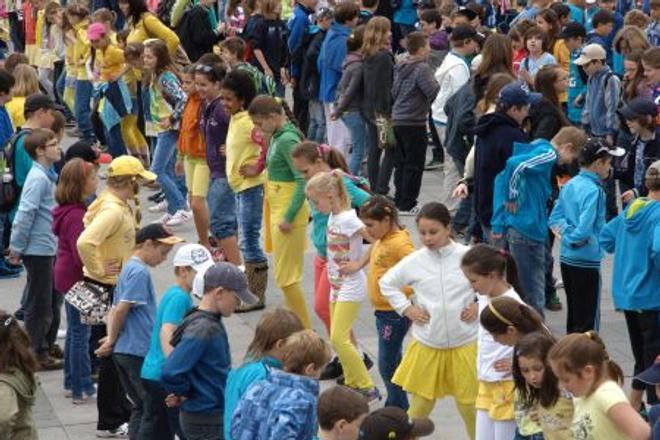THE OLD folk dance called ‘kalamajka’ attracted 1,820 people to Freedom Square in the town of Prievidza on May 7 and they established a new Slovak record for the number of people dancing at one time. The event was held on May 7, Europe Day, and dancers expressed their approval of the country’s membership in the European Union by wearing clothing in yellow or blue, the colours of the EU.
The TASR newswire wrote that the youngest dancer, Rasťo Rajčo, was only 6 years old while Mária Petrášová, aged 80, was the oldest participant. The attempt at the new Slovak record started shortly after 11:00 after the participants held a brief rehearsal.
“Instructed by teacher Stanislav Malega, the host of the event and its spiritual father, participants in the square moved to the rhythm of the kalamajka two times: first only to amplified recorded music and the second time while both singing and dancing,” said Igor Svítok of the Slovenské rekordy association, who added that both versions were successful in setting records for the most people dancing the kalamajka in one locale at a single time.
The SITA newswire wrote that the kalamajka is danced by couples who repeat a pattern of stomping and tapping their feet while alternatively spinning in polka style. TASR wrote that the dance resembles a strophic polka and is marked by a relatively strict connection between the music and the dance movements.
The dance became popular in western Slovakia mostly near the town of Senica in the 19th century as well as in Czech areas of the region but it later fell in popularity and was rarely danced. In north-eastern Slovakia, the dance was called ‘kolomyjka’ and was danced solo and by couples as well as by groups in a swift rhythm. In the regions of Upper Nitra and Turiec, the dance resurfaced in a trial run at a folklore festival (Podpolianske folklórne slávnosti) in Detva in 1993.
Town officials in Prievidza supported the attempt to set a record and its mayor, Katarína Macháčková, participated as well as Anna Záborská, an MP in the European Parliament and the head of the Ľubomír Vida secondary school of economy in Prievidza.



 (source: Photopress)
(source: Photopress)